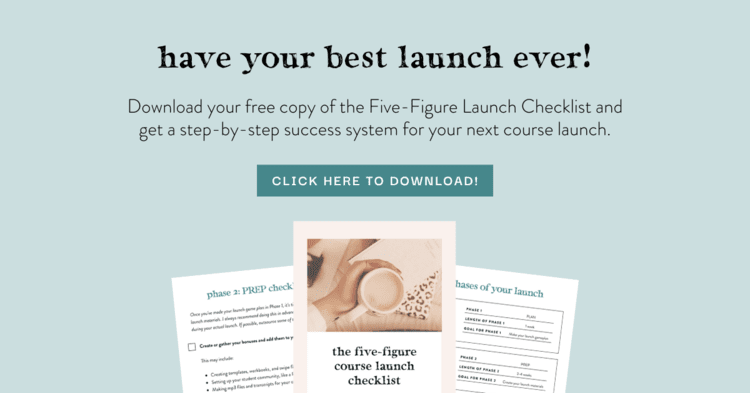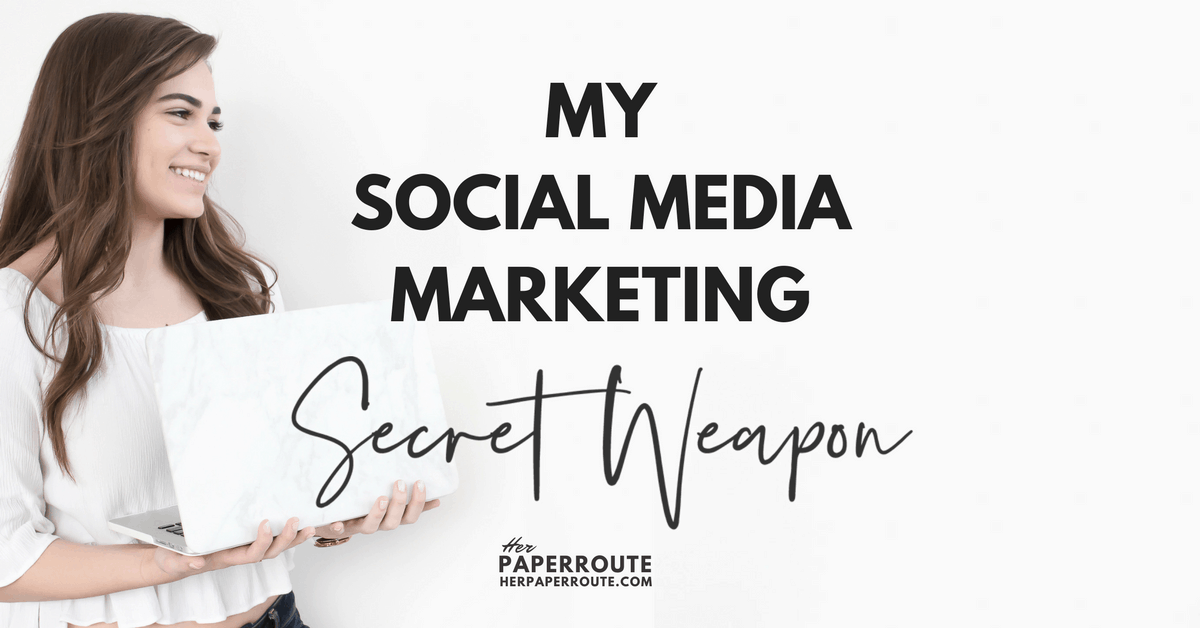4 Secrets for Writing Sales Page Copy That Converts

Knowing how to write effective sales page copy that converts is going to be the difference between your $5k launch and your $50k launch.
As entrepreneurs, we must have strong sales pages that sell – and copywriting is mission-critical.
As an affiliate partner of various brands and sponsored content, HerPaperRoute may earn commission on qualifying purchases. Disclaimer
Today I want to simplify the sales page process for you.
Yes, there’s a lot that goes into writing a successful sales page (and no, it isn’t just about introducing your offer and then leaving potential buyers to their own devices). But the cool thing is that once you get it, you get it.
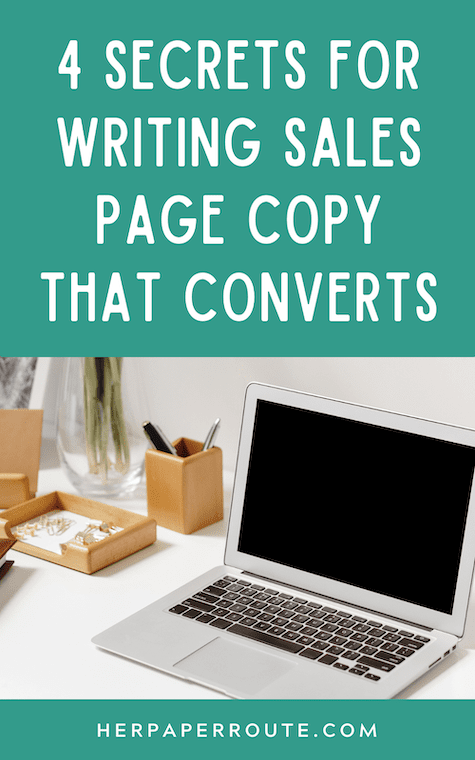
4 Secrets to Sales Page Copy that Converts
If your sale page is not converting, you may be missing one of these 4 crucial conversion factors.
Secret #1. Have a strong, clear message that’s repeated throughout your sales page.
Every piece of great sales copy starts with a clear message. To hone in on your message, start by asking yourself the following question:
Why should people care?
And hey, I don’t mean to be rude, but it’s a fact of life that people are busy. And selfish. People are always looking out for their own best interests. If you want people to read through your entire sales page, you need to give them a compelling reason to do so.
How?
By immediately letting people know what they stand to gain if they carry on reading your sales page and then take action on your offer.
Before sitting down to write a new sales page, get clear on the marketing message of your offer. Your message should speak to at least one big benefit or result your product promises, and if it ties into your product’s Unique Value Proposition (UVP), even better.
Here are two messaging examples:
Course Creation Kickstart: “Creating an online course will allow you to help more people and make more money.”
Empowered Weight Loss: “Weight loss can be fun, intuitive, and aligned and doesn’t have to involve calorie-counting or painful restriction diets.”
Don’t worry about making your message particularly verbose or eloquent; it’s simply a starting point to work from and it’s going to morph into various copy nuggets that’ll go on your sales page.
What do you do once you’re clear on your marketing message? You infuse that baby aaaaall over your sales page.
Your marketing message, or some iteration of it, should be repeated at least 3-5 times on your sales page in different ways.
Repetition is key here.
It’s a simple copywriting hack, but one that works.
Here are a few examples of how I’ve repeated a variation of my marketing message throughout the sales page for Course Creation Kickstart:
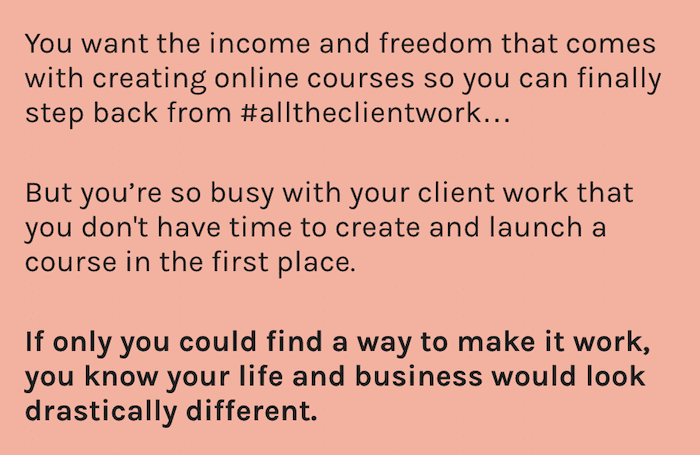


Secret #2. Draw the right people in with your “That’s Me” headline.
Whenever I help my clients and students with their sales pages, I teach them to start the page off with what I call the “That’s Me!” headline.
It’s a short and snappy sentence that will resonate with your target audience members and have them saying, “Yes! She get’s me!”
When crafting your headline, keep in mind the two main goals for the headlines and sub-headings on your sales pages:
1. To draw in the right people while repelling the wrong people
2. To encourage people to continue reading down the page
The best headlines are simple, punchy, and easy to understand. No flowery language here — remember, clarity is king.
If you can, it’s always best to use the exact words and phrases you’ve heard your ideal clients use when talking about the topic of your product.
Using your target audience’s exact language will result in those, “Omg, she’s in my head!” moments that are oh so good for conversions.
Want a little sample for some inspiration? Here are headlines from two sales pages I’ve written:


Secret #3. Highlight the features AND benefits of your offer.
This one is a golden standard when writing any piece of sales copy. Why is it so important to highlight both features and benefits?
Well, because if you focus too much on the features of your product, you’ll satisfy the rational side of your customer’s brain but not the emotional side.
On the flip side, if you focus too much on the benefits and don’t share the features, your potential customer won’t be able to rationally justify their purchase decision.
We’ve gotta find a balance between the two. Oh, and just in case you need a refresher:
Features: The tangible aspects of your product.
That is, what’s included in the offer itself. For example: the number of coaching calls or course modules, how long the calls are, and any bonuses that are included.
Benefits: What your product will help your customers do or achieve.
If you want to dive deeper, I have an entire post distinguishing features from benefits, which includes a bunch of real-life examples.
Here are two ways to make sure you include both features and benefits on your sales pages:
1. Create a section titled “What You’ll Get” where you list out all your product’s features, in bullet-point style.
You can then have a section called “What You’ll Achieve” where you list out the benefits of your product.
2. Use two little magic words to bridge the gap between feature and benefit.
Those two magic words?
“So” and “that”.
Let me explain.
Say you’re writing a bullet point list sharing the features of your product. Your list can follow this format:
- (Benefit) so that (feature).
- (Benefit) so that (feature).
- (Benefit) so that (feature).
For example:
“8 step-by-step tech tutorials (feature) so that you can quickly and easily create your first online course (benefit).”
Secret #4. Social proof
I kept this secret for last because it’s the most important one.
Word-of-mouth is the most powerful form of advertising, hands down. Think about a time when a friend or family member recommended a restaurant to you.
Not only did they recommend it, but they were also raving about a dish that they said you just had to have when you went.
You probably made a mental note to go to that restaurant, right?
This is literally word-of-mouth advertising in action.
And guess what? Testimonials are just another form of word-of-mouth.
So sprinkle those bad boys all over your sales page. I want to see at least 4-5 testimonials on every sales page.
Besides testimonials, here are two other forms of social proof to play around with on your sales page:
Case studies where you highlight a former customer or client, briefly share their story, and talk about the results they achieved with your help.
Social proof apps like ConvertBox. These apps are pretty neat! They add a little box in the bottom corner of your sales page that showcases recent purchases of your product.
For example, the social proof box might say something like, “Sally H. from Oklahoma City purchased the Course Creator’s Toolkit 2 hours ago.”
4 Secrets for Writing Sales Page Copy That Converts – Conclusion
Which of these 4 strategies are you already using on your sales pages?
Which are you going to implement ASAP? Where else are you getting hung up when writing your sales pages?
Make sure you get your free copy of the 5-Figure Launch Checklist now:
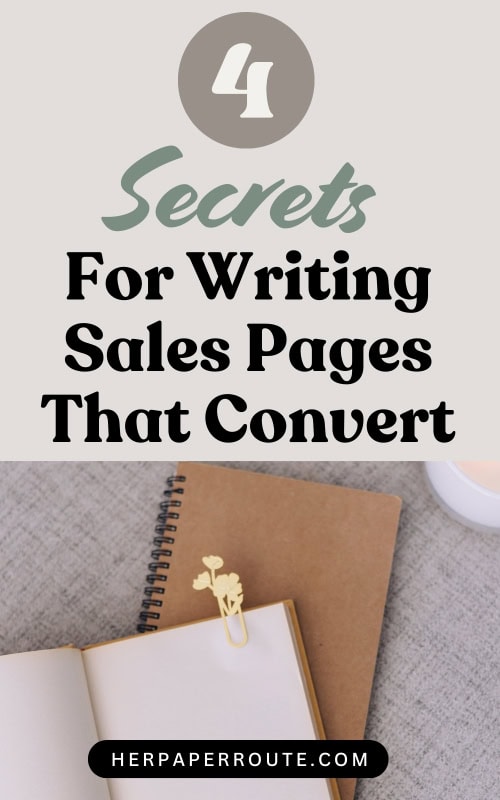
Follow along on Instagram!




